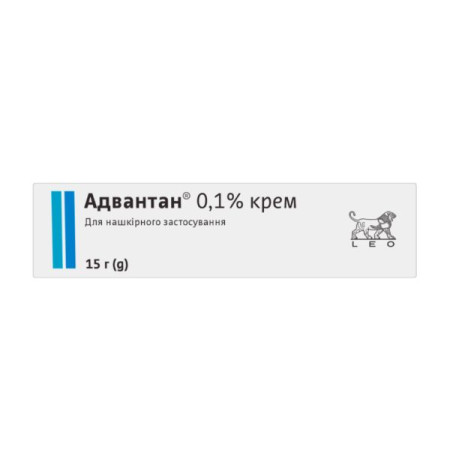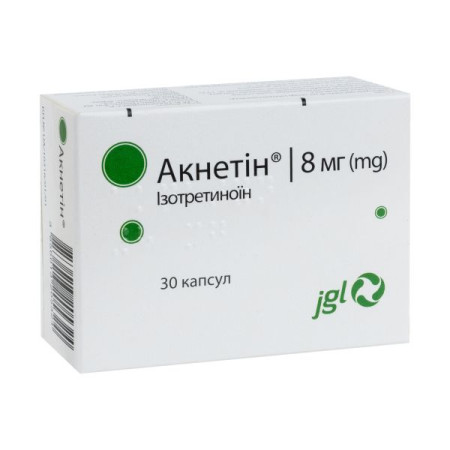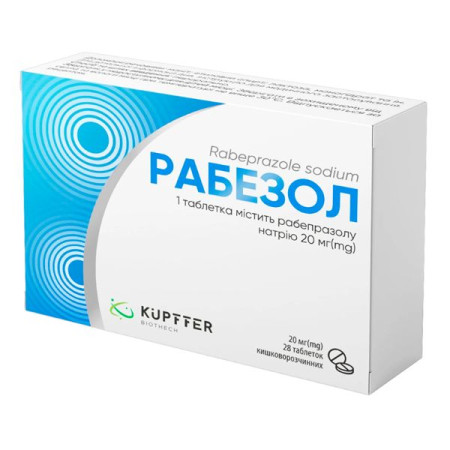L-Optik Rompharm eye drops solution bottle 5 mg/ml

Instructions for use L-Optik Rompharm eye drops solution bottle 5 mg/ml
Composition
active ingredient: levofloxacin;
1 ml of solution contains levofloxacin hemihydrate equivalent to levofloxacin 5 mg;
Excipients: benzalkonium chloride; sodium chloride; hydrochloric acid 1 M or sodium hydroxide 1 M; purified water.
Dosage form
Eye drops, solution.
Main physicochemical properties: clear solution, from pale yellow to pale yellow with a greenish tint, practically free from visible particles.
Pharmacotherapeutic group
Drugs used in ophthalmology. Levofloxacin. ATX code S01A E05.
Pharmacological properties
Pharmacodynamics.
Levofloxacin is the L-isomer of the racemic drug substance ofloxacin. The antibacterial effect is mainly exerted by the L-isomer of ofloxacin.
Mechanism of action.
Levofloxacin is a fluoroquinolone antibacterial agent that inhibits the activity of bacterial type II topoisomerases, DNA gyrase and topoisomerase IV. The action of levofloxacin in gram-negative bacteria is directed primarily at DNA gyrase, and in gram-positive bacteria at topoisomerase IV.
Mechanisms of resistance.
There are two main mechanisms by which bacteria develop resistance to levofloxacin, namely: a decrease in the concentration of the drug inside the bacterial cell or changes in the set of enzymes against which the drug is directed. Such changes occur due to mutations in the chromosomal genes encoding DNA gyrase (gyrA and gyrB) and topoisomerase IV (parC and parE; grlA and grlB in Staphylococcus aureus). The causes of resistance due to a decrease in the concentration of the drug inside the bacterial cell are changes in the porins of the outer membrane (OmpF), which reduces the possibility of penetration of fluoroquinolones into gram-negative bacteria, or pumps that promote the outflow of substances. Resistance due to the outflow of substances has been described in pneumococci (PmrA), staphylococci (NorA), anaerobic and gram-negative bacteria.
Plasma-mediated resistance to quinolones (determined by the qnr gene) has been reported in Klebsiella pneumoniae and E. coli.
Cross-resistance.
Cross-resistance between fluoroquinolones is possible. Single mutations do not result in clinical resistance, but multiple mutations usually do result in clinical resistance to all drugs in the fluoroquinolone class. Alterations in outer membrane porins and efflux systems can have broad substrate specificity, can be directed against several classes of antibacterial agents, and can lead to the emergence of multiple resistance.
Limit values.
The MIC (minimum inhibitory concentration) breakpoints that separate susceptible and moderately resistant organisms from resistant organisms according to the EUCAST (European Committee on Antimicrobial Susceptibility Testing) breakpoint are as follows:
Pseudomonas spp., Staphylococcus spp., Streptococcus A, B, C, G:
sensitive ≤ 1 mg/l, resistant > 2 mg/l;
Streptococcus pneumoniae: susceptible ≤ 2 mg/l, resistant > 2 mg/l;
Haemophilus influenzae, Moraxella catarrhalis: susceptible ≤ 1 mg/l, resistant > 1 mg/l.
Other pathogenic microorganisms: sensitive ≤ 1 mg/l, resistant > 2 mg/l.
Spectrum of antibacterial action.
The prevalence of acquired resistance in individual species may vary geographically and over time, and it is therefore advisable to have local information on resistance, especially when treating severe infections. Therefore, the information provided provides only approximate guidance and recommendations on the possible susceptibility of microorganisms to levofloxacin. If the prevalence of resistance in a local area is such that the usefulness of the drug against at least some types of infections is questionable, specialist advice should be sought as appropriate.
The table below only presents the types of bacteria that commonly cause external eye infections, such as conjunctivitis.
Antibacterial spectrum of action – sensitivity categories and resistance characteristics according to EUCAST requirements.
| Category I: common susceptible species | |
| Aerobic Gram-positive microorganisms | |
| Staphylococcus aureus (MSSA)* | |
| Streptococcus pneumoniae | |
| Streptococcus pyogenes | |
| Viridans group streptococci | |
| Aerobic Gram-negative microorganisms | |
| Escherichia coli | |
| Haemophilus influenzae | |
| Moraxella catarrhalis | |
| Pseudomonas aeruginosa | (Isolate from public places) |
| Other microorganisms | |
| Chlamydia trachomatis | (When treating patients with chlamydial conjunctivitis, systemic antimicrobial treatment should be administered concurrently) |
| Category II: species for which acquired resistance may pose a problem | |
| Aerobic Gram-positive microorganisms | |
| Staphylococcus aureus (MRSA)* | |
| Staphylococcus epidermidis | |
| Aerobic Gram-negative microorganisms | |
| Pseudomonas aeruginosa | (Isolate from hospitals) |
* MSSA = methicillin-susceptible Staphylococcus aureus strains.
The resistance data presented in the table are based on the results of a multicenter observational study (ophthalmology study) on the prevalence of resistance among bacterial isolates obtained from patients with eye infections in Germany, June–November 2004.
Microorganisms were classified as susceptible to levofloxacin based on in vitro susceptibility and plasma concentrations after systemic therapy. Higher peak concentrations were achieved with topical administration than with plasma. However, it is unknown whether and how the kinetics of the drug after topical ocular administration may alter the antibacterial activity of levofloxacin.
Children
The pharmacodynamic properties are the same in adults and children aged 1 year and older.
Pharmacokinetics.
After instillation into the eyes, levofloxacin is well preserved in the tear film.
In a study of healthy volunteers, the mean tear film concentrations of levofloxacin measured 4 and 6 hours after topical dosing were 17.0 and 6.6 μg/mL, respectively. Five of the six volunteers studied had concentrations of 2 μg/mL or greater at 4 hours post-dose. Four of the six volunteers studied had these concentrations at 6 hours post-dose.
Levofloxacin plasma concentrations were measured in 15 healthy adult volunteers at various time points during a 15-day course of treatment with the drug. The mean plasma levofloxacin concentration 1 hour after dosing ranged from 0.86 ng/mL on day 1 to 2.05 ng/mL on day 15. The maximum levofloxacin concentration of 2.25 ng/mL was recorded on day 4 after 2 days of dosing every 2 hours (total of 8 doses per day). The maximum levofloxacin concentration increased from 0.94 ng/mL on day 1 to 2.15 ng/mL on day 1.
15, which is 1000 times lower than the concentration reported after standard oral doses of levofloxacin.
The plasma concentration of levofloxacin achieved after application to the affected eye is unknown.
Indication
Topical treatment of external bacterial ocular infections in patients aged 1 year and older caused by microorganisms susceptible to levofloxacin.
Contraindication
Hypersensitivity to the active substance levofloxacin, hypersensitivity to other quinolones or to any of the components of the drug.
Children's age up to 1 year.
Interaction with other medicinal products and other types of interactions
Systemic use of some quinolones has been shown to increase plasma theophylline concentrations, interfere with caffeine metabolism, enhance the effects of the oral anticoagulant warfarin and its derivatives, and has been associated with a transient increase in serum creatinine in patients concomitantly receiving systemic cyclosporine.
Since peak plasma concentrations of levofloxacin after instillation into the eyes are at least 1000 times lower than those observed after standard oral doses, interactions typical of systemic use are unlikely to be clinically significant when using these eye drops.
When using different topical ophthalmic medications concurrently, the interval between instillations should be at least 15 minutes.
Pediatric patients.
No drug interaction studies have been conducted.
Application features
The drug should not be administered subconjunctivally. The solution should not be administered directly into the anterior segment of the eye.
Systemic fluoroquinolones are associated with serious, sometimes fatal allergic (anaphylactic) reactions, even after a single dose.
Some reactions were accompanied by cardiovascular failure, loss of consciousness, angioedema (including laryngeal, pharyngeal or facial swelling), airway obstruction, dyspnoea, urticaria and pruritus.
If an allergic reaction to levofloxacin occurs, the use of the drug should be discontinued.
As with all anti-infectives, prolonged use may result in overgrowth of non-susceptible organisms, including fungi. If the patient's condition worsens due to infection or if there is no clinical improvement within an appropriate period of time, the drug should be discontinued and alternative therapy should be initiated.
The patient should be examined as clinically indicated, including slit-lamp biomicroscopy and, if necessary, fluorescein staining.
Use in elderly patients.
There is no need to adjust the dose for elderly patients.
Contact lenses.
The eye drops contain benzalkonium chloride as a preservative. Before instillation, remove your lenses and wait at least 15 minutes before putting them back in. Benzalkonium chloride may discolor soft contact lenses.
Use during pregnancy or breastfeeding
Pregnancy.
There are no adequate data from the use of levofloxacin in pregnant women. Animal studies do not indicate direct or indirect harmful effects with respect to reproductive function. The potential risk to humans is unknown. Levofloxacin eye drops should be used during pregnancy only if the expected benefit to the woman justifies the potential risk to the fetus.
Breast-feeding.
Levofloxacin passes into breast milk. However, no effects on the breastfed child are expected at therapeutic doses of the drug. Eye drops can be used during breastfeeding only if the expected benefit to the woman justifies the potential risk to the infant.
Fertility.
Levofloxacin did not impair fertility in rats at exposures significantly in excess of the maximum human exposure following ophthalmic administration.
Ability to influence reaction speed when driving vehicles or other mechanisms
The drug has a minor effect on the ability to drive vehicles and use other mechanisms.
If any temporary visual effects are observed, the patient should wait until the vision clears before driving or operating other machinery.
Method of administration and doses
Adults and children over 1 year of age: 1-2 drops in the affected eye(s) every 2 hours up to 8 times a day immediately upon waking for the first 2 days, then 4 times a day from the 3rd to the 5th day.
To prevent contamination of the dropper, the tip of the dropper should not come into contact with the eyelids or surrounding areas of the eye.
The duration of treatment depends on the severity of the infection, as well as the clinical and bacteriological course of the disease. Usually the duration of treatment is 5 days.
When using different topical ophthalmic medications concurrently, the interval between instillations should be at least 15 minutes.
The safety and effectiveness of treating corneal ulcers and ophthalmia neonatorum have not been established.
Method of application.
Ophthalmic use.
Children.
Use for children over 1 year of age.
Overdose
The total amount of levofloxacin in a bottle of eye drops is too small to cause toxic effects after accidental oral administration. If necessary, the patient should be clinically examined and supportive measures should be taken. After local overdose of the drug, the eyes should be washed with clean water at room temperature.
Side effects
Adverse reactions can be expected in approximately 10% of patients. These reactions are usually mild to moderate, transient, and mainly confined to the eye area.
Since the product contains benzalkonium chloride, the active ingredient of this preservative may cause contact eczema and/or irritation.
The following adverse reactions, determined to be definitely, probably or possibly related to treatment, have been reported during clinical trials and post-marketing surveillance.
From the immune system.
Rare (>1/10,000, <1/1,000): extraocular ocular allergic reactions, including skin rash.
Very rare (< 1/10,000), not known (frequency cannot be estimated from the available data): anaphylaxis.
From the nervous system.
Uncommon (>1/1000, <1/100): headache.
From the organs of vision.
Common (>1/100, <1/10): burning in the eyes, decreased vision and mucus discharge.
Uncommon (>1/1000, <1/100): eyelid opacification, chemosis, conjunctival papillary reaction, eyelid edema, ocular discomfort, foreign body sensation, ocular itching, ocular pain, conjunctival infection, conjunctival follicles, dry eye, eyelid erythema, and photophobia.
Corneal deposits were not observed during clinical studies.
On the part of the respiratory system, chest organs and mediastinum.
Uncommon (>1/1000, <1/100): rhinitis, pharyngitis.
Very rare (<1/10,000), not known (cannot be estimated from the available data): laryngeal edema.
General disorders and administration site conditions
Very rare (<1/10,000), not known (frequency cannot be estimated from the available data): fever.
Pediatric patients.
The frequency, type and severity of adverse reactions in children can be expected to be similar to those in adults.
Additional adverse reactions that have been observed with systemic use of the active substance (levofloxacin) and may potentially occur with systemic use
L-Optics
Ruptures of the shoulder, hand, Achilles tendon, or other tendons requiring surgery or resulting in long-term disability have been reported in patients receiving systemic fluoroquinolones. Studies and post-marketing experience with systemic quinolones suggest that the risk of these ruptures may be increased in patients receiving corticosteroids, particularly in the elderly, and in tendons that are subject to high stress, including the Achilles tendon (see section 4.4).
Reporting of suspected adverse reactions identified after the marketing authorisation of a medicinal product is important. This allows for continuous monitoring of the risk/benefit ratio of the medicinal product. Healthcare professionals are asked to report any suspected adverse reactions via the national reporting system.
Expiration date
3 years.
Do not use after the expiry date stated on the packaging.
The shelf life of the drug after first opening the bottle is 28 days.
Storage conditions
Store in the original packaging out of the reach of children at a temperature not exceeding 25 ºC.
Packaging
5 ml in a 5 ml polyethylene bottle with a dropper stopper and a polyethylene screw cap with a protective ring.
1 bottle in a cardboard box.
Vacation category
According to the recipe.
Producer
K.T. ROMPHARM COMPANY SRL
(SC ROMPHARM COMPANY SRL)
Location of the manufacturer and address of its place of business.
Eroilor St. No. 1A, Otopeni, 075100, Ilfov County, Romania
(Eroilor str., No. 1A, Otopeni city, 075100, county Ilfov, Romania).
There are no reviews for this product.
There are no reviews for this product, be the first to leave your review.
No questions about this product, be the first and ask your question.















